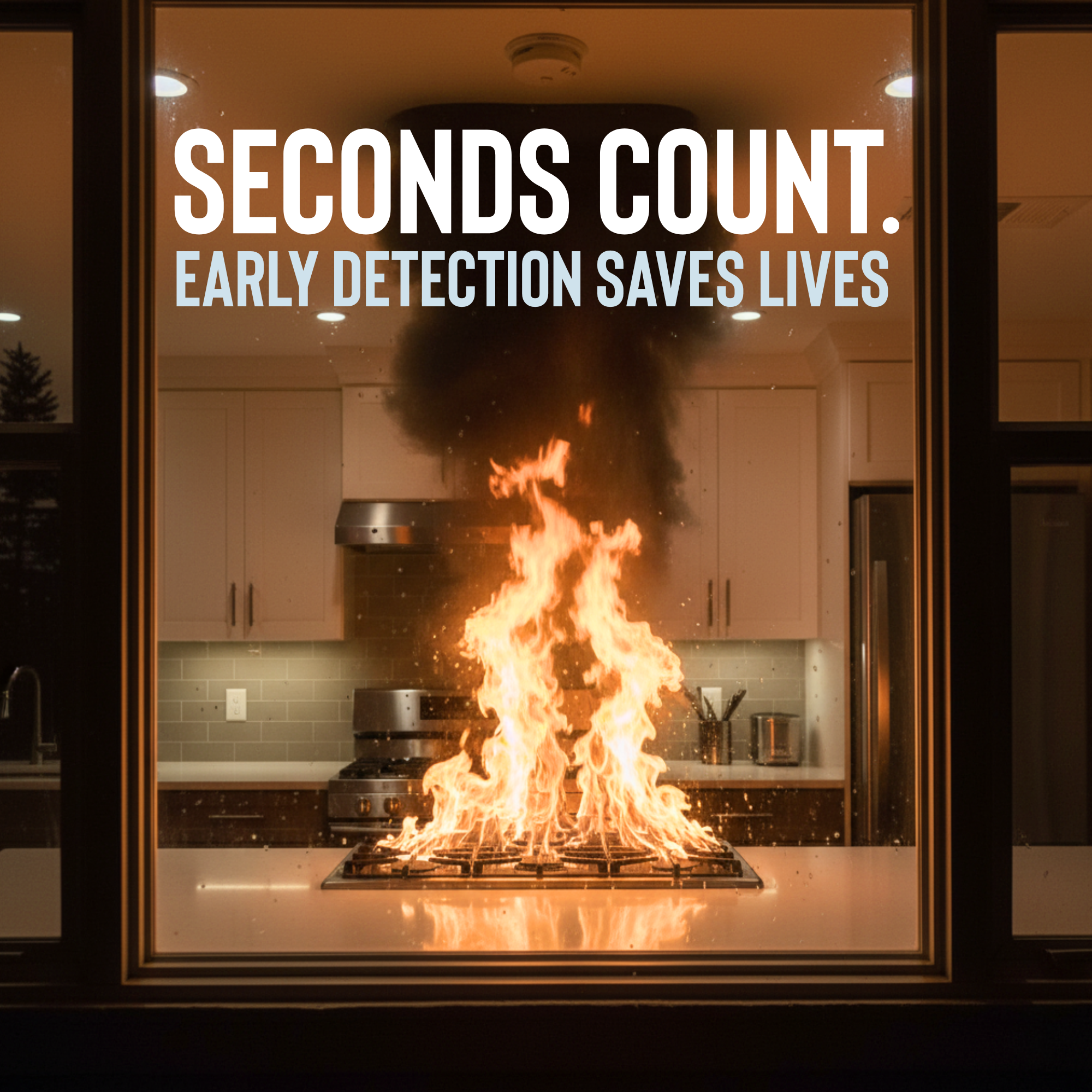- (800) 252-0368
- Monday - Friday: 8:00am to 5:00pm
- |
Top 5 Causes of Residential Fires and How to Prevent Them - Prudential Alarm
- Home
- Fire & Life
- Top 5 Causes of Residential Fires and How to Prevent Them

A house fire is a devastating event that can strike without warning.
While the images on the news can feel distant, the reality is that a home fire breaks out every 87 seconds in the U.S.
By understanding the most common causes, you can take proactive steps to protect your family, your home, and your peace of mind.
This guide, based on data from the National Fire Protection Association (NFPA) and the U.S. Fire Administration, breaks down the top five causes of residential fires and provides actionable prevention tips for homeowners in Michigan and Ohio.
1. Cooking Equipment
The Statistics: Cooking is the undisputed leading cause of residential fires. It accounts for nearly half of all reported home fires, with unattended cooking being the number one reason for kitchen blazes. Thanksgiving is the peak day for cooking fires.
How to Prevent Them:
Stay in the Kitchen: Never leave cooking unattended, especially when frying, grilling, or broiling. If you have to step away, even for a moment, turn off the stove.
Clear the Area: Keep anything that can burn—oven mitts, wooden utensils, food packaging, towels, or curtains—at least three feet away from your stove.
Know Your Tools: Always have a fire extinguisher nearby and know how to use it. Never use water to put out a grease fire; instead, smother the flames with a lid or baking soda.
2. Heating Equipment
The Statistics: Heating is the second leading cause of home fires. Many of these fires occur during the winter months from December through March when people are using furnaces, fireplaces, and space heaters to stay warm.
How to Prevent Them:
Give Space Heaters Space: Keep portable heaters at least three feet from anything that can burn, including furniture, bedding, and curtains. Always turn them off when you leave the room or go to sleep.
Professional Maintenance: Have your furnace and chimney inspected and cleaned by a professional annually.
Safe Fireplaces: Ensure your fireplace has a sturdy screen to prevent embers from flying out and that the area around it is clear of flammable materials.
3. Electrical Issues
The Statistics: Electrical distribution and lighting equipment is a leading cause of home fire property damage. This includes issues with faulty wiring, overloaded circuits, and old or damaged electrical cords.
How to Prevent Them:
Inspect Cords: Regularly check electrical cords for fraying, cracks, or damage. Replace any damaged cords immediately.
Don't Overload Outlets: Avoid plugging too many appliances into one outlet or using “octopus plugs” to expand your connections. Use a power strip with a surge protector.
Professional Inspections: If your home has an outdated electrical system, consider having a licensed electrician inspect and update it. Look for warning signs like flickering lights, buzzing sounds, or outlets that are hot to the touch.
4. Careless Smoking
The Statistics: While less frequent than cooking fires, fires caused by smoking materials are the leading cause of home fire deaths. A lit cigarette dropped on a couch or mattress can smolder for hours before igniting.
How to Prevent Them:
Smoke Outside: The safest place to smoke is outdoors. Use
Deep Ashtrays: Always use a sturdy, deep ashtray and ensure all cigarettes are fully extinguished before disposing of them. Never smoke in bed or when feeling drowsy.
5. Candles
The Statistics: Candles start an average of nearly 6,000 residential fires each year. Many of these are caused by candles left unattended or placed too close to flammable items.
How to Prevent Them:
Never Leave Them Unattended: Always blow out candles when you leave a room or go to sleep.
Stay One Foot Away: Keep candles at least one foot away from anything that can burn.
Use Sturdy Holders: Place candles in sturdy holders on a stable, fire-resistant surface where they cannot be knocked over by children or pets.
The Silent Fire Hazard: Carbon Monoxide
While smoke is a visible sign of fire, carbon monoxide (CO) is a silent, odorless killer. This poisonous gas is often a byproduct of home heating and appliances, making it a critical safety concern in the colder months. According to the CDC, CO poisoning results in approximately 400 deaths per year in the United States, often in cases where fire alarms are not triggered.
Your best defense against CO is a reliable detector. We can provide and professionally install CO alarms that provide 24/7 monitoring, alerting our central station the moment dangerous levels are detected. This offers an essential safety net, protecting your family from a hazard that you cannot see, smell, or taste.
How Prudential Alarm Can Help You Prevent Fires
While prevention is the first line of defense, early detection is critical to saving lives. Our integrated fire and life safety systems provide 24/7 monitoring to ensure that if a fire does break out, the fire department is notified immediately—even if you're not home.
We also offer professional fire alarm system design, installation, and inspection services to give you complete peace of mind.
To learn more about our comprehensive fire and life safety solutions, contact us today for a free consultation. You can reach us directly at (800) 252-0368 or get a free quote at prudentialalarms.com/contact-us.

